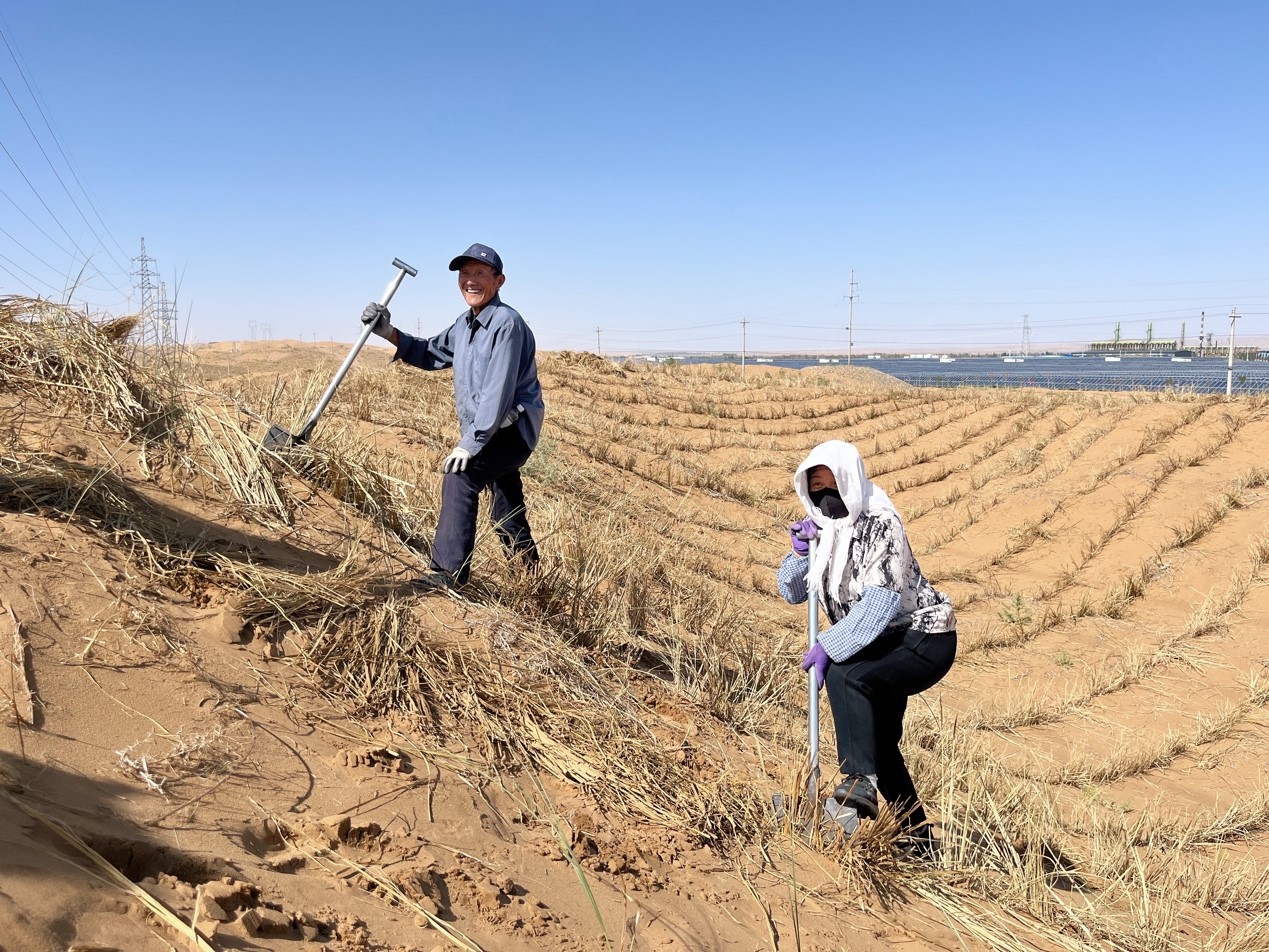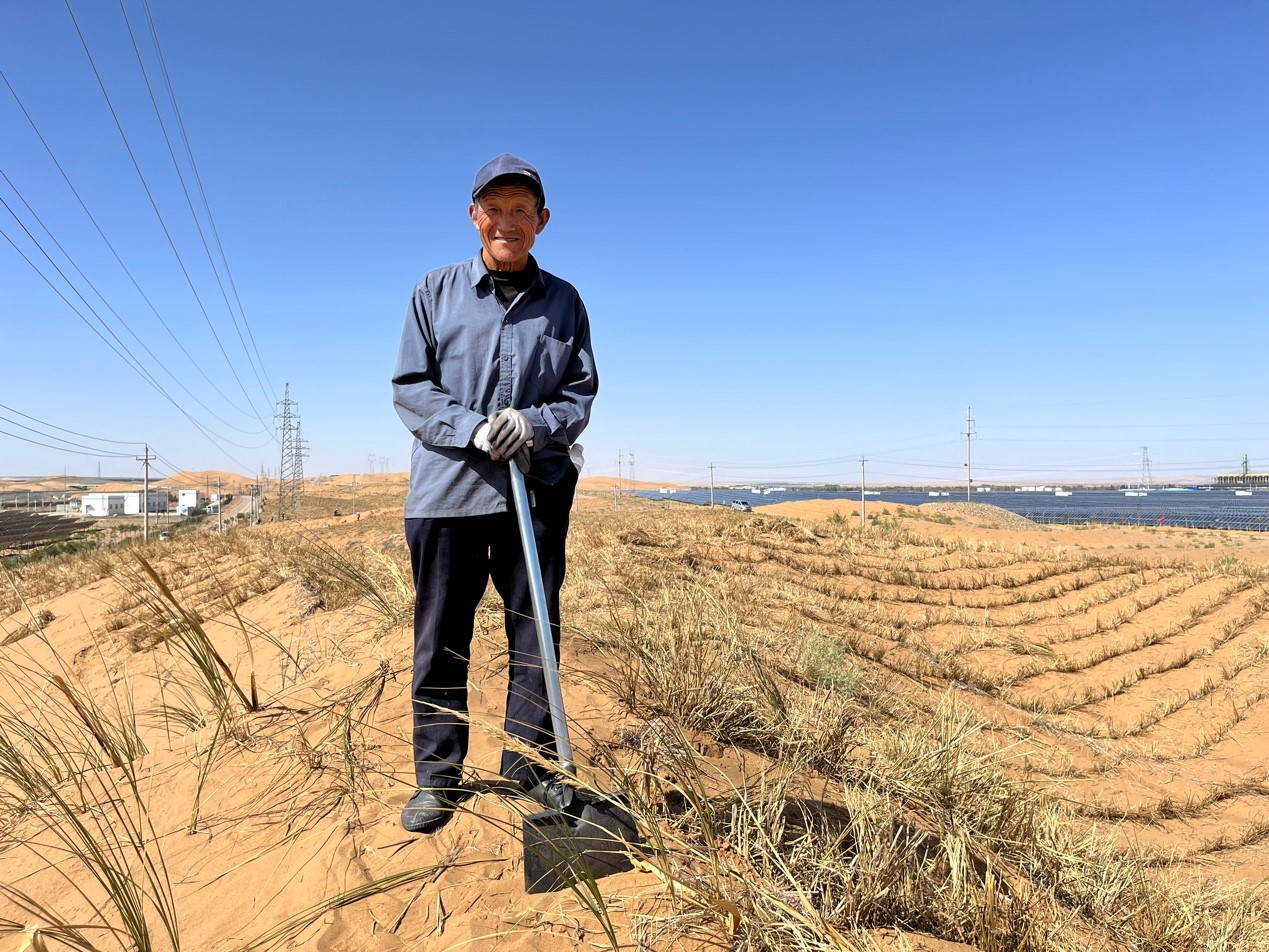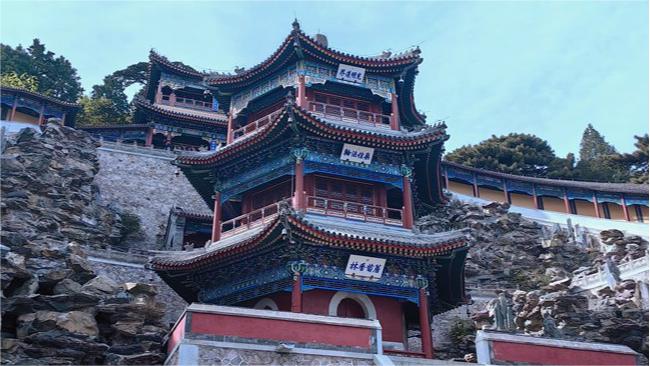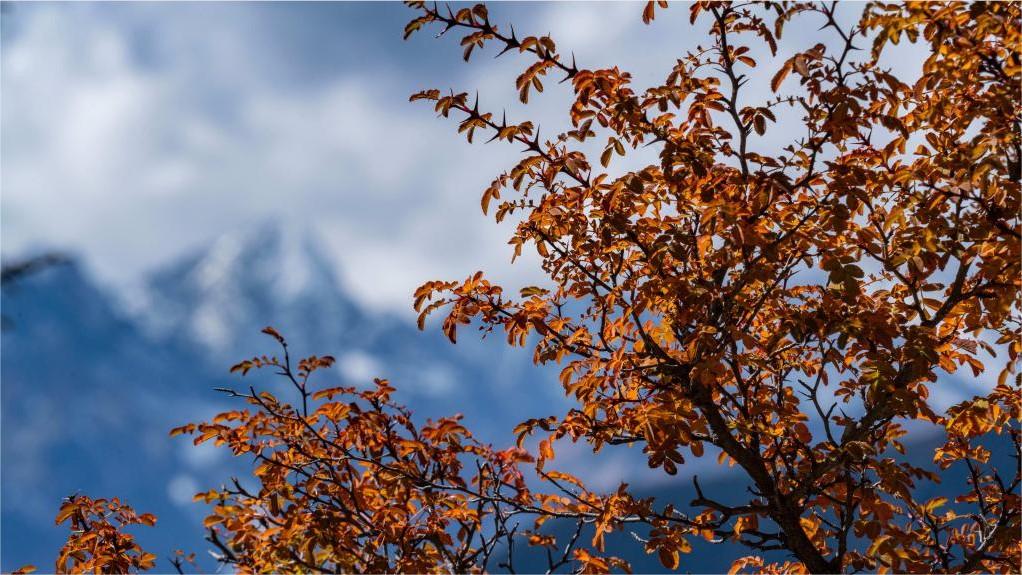China's magical straw checkerboard: turning desert into lush land
Due to its dry climate and limited water resources, northwest China’s Ningxia Hui Autonomous Region has struggled with severe environmental problems, including desertification and water preservation. The World Food Programme designated its Xihaigu region as one of the "most unfit places for human settlement" in the 1970s due to its fragile ecosystem and susceptibility to droughts.
Imagine my astonishment when I found Yinchuan, Ningxia's capital city, is a wetland city listed on the Ramsar Convention on Wetlands due to the outstanding preservation efforts of the locals. The Ramsar Convention granted Yinchuan certificates of "international wetland cities" in 2018 to mark the city's continuous dedication to wetlands protection through creative measures. Yinchuan is the first city in Western China to receive this distinction.

Locals plant straw checkerboard sand barriers in the desert in northwest China’s Ningxia Hui Autonomous Region. (Photo/Chizao)
China ranks first on the list of countries with "international wetland cities", with 13 out of a total of 43.
During my visit to Yinchuan, I met Johns Muleso Kharika, Chief of the United Nations Convention to Combat Desertification's Unit of Science, Technology, and Innovation, and several academics who came here to better understand the region's environmental preservation miracle.
Through our talk, I learned about straw checkerboard sand barriers, a low-cost and highly effective anti-desertification approach. To learn more about the history of China's anti-desertification efforts and the "straw checkerboard sand barrier" technique, which was developed in China and has since spread worldwide, I travelled to Shapotou (literally “high sand dunes”), a district in Zhongwei city in Ningxia.
The straw checkerboard sand barriers were originally created to build the desert section of the Baotou-Lanzhou Railway. Researchers discovered that straws arranged in a checkerboard pattern on the desert floor can effectively control the movement of sand dunes.
In 1955, the Chinese Academy of Sciences established China’s first comprehensive observation station in Shapotou. The following year, the country’s first specialized sand-break forest was launched.
After numerous failures and explorations, straw checkerboard sand barriers were adopted as the main method for dealing with moving sand when the railway opened.
The method was applauded by experts from both home and abroad at the United Nations Conference on Desertification (UNCOD) in Nairobi in 1977. Since then, foreign experts and personnel have come to Shapotou to learn the unique method.
In China, the fight against desertification and for environmental conservation began with the deployment of straw checkerboard sand barriers.
The magic straws that hold back deserts in China

Wang Lifu, aged 68, was born and raised in Zhongwei, northwest China’s Ningxia Hui Autonomous Region. (Photo/Chizao)
I met Tang Xining, a 57-year-old scientist who has been fighting desertification in Ningxia for over 33 years. He is the third generation to use the tried and true "straw checkerboard sand barrier" technique. More than 487 square kilometers of land have been saved from desertification due to his efforts.
The straw checkerboard sand barriers can only halt the progression of the desert, though grass and vegetation are planted inside the straw squares to prevent desertification indefinitely. The seed inside the straw square is dragged up by the wind and spread to the inner borders of the straw barriers. With sufficient moisture, the grass will flourish, and the decomposing straw will act as a natural fertilizer.
The straw barriers will decompose for three years, and living "grass checkerboard sand barriers" will replace them, turning the dunes back to green.
Wang Lifu, aged 68, was born and raised in Zhongwei. It astonished me to see an elderly man like him working in the scorching desert heat, planting the straw checkerboard sand barriers.
He told me that planting these barriers in the desert allows him to make an extra 200 RMB per day and that he is physically capable of doing so and safeguarding his hometown from sandstorms.
"When I was a kid, the sandstorms never stopped engulfing our city. The wind was so strong it would knock you over, and the sand in the air was so thick it was physically painful to breathe," he said.
According to Wang, there used to be dozens of sandstorms a year before China's anti-desertification measures, but today they only happen once a year, and sometimes not at all.
Wang says he does not want to stay at home like other elderly people, and wants to help with the fight against desertification while he still can.
"If we don't stop the sandstorm here, it will spread to many other places in China, even to Beijing, our capital and where you live," he said.
The labor involved in laying down straw barriers in the desert does not appeal to the younger generation, and most of those who do it are either housewives or the elderly. Most "straw checkerboard sand barriers" are now planted by machines, although human labour is still required on particularly steep slopes or shifting sand dunes.

A star-gazing themed hotel in the desert of Zhongwei draws visitors from around China. (Photo provided by the hotel)
Wang has modernized the method using machines and other cutting-edge technology, earning five patents. The original "straw checkerboard sand barrier" only kept 25% of the desert's grass alive, while the new technique allows almost 75% of the plants to thrive.
“Scholars from many developing nations have come to Ningxia to learn about the secrets of the straw checkerboard sand barriers, and we are willing to share our experiences in environmental protection with the whole world,” said Tang.
Locals informed me that a large part of the desert in Ningxia has been developed as a tourist scenic site. Ningxia hosts annual summer vacation events where kids from all around China come to learn about environmental conservation and try out the checkerboard sand barrier.
It's a clever strategy that simultaneously protects the environment, educates the youth, and develops ecological tourism.
Photos
Related Stories
- Grass grid barriers combat sand erosion in China's deserts
- Scientists dedicated to decoding desert evolution in Xinjiang
- Greening China's "loneliest city" in Gobi desert
- China's Inner Mongolia promotes science-based desertification control
- China's largest desert probably formed 300,000 years ago: researchers
- Fox face appears on desert
Copyright © 2023 People's Daily Online. All Rights Reserved.









